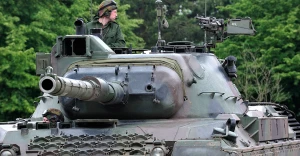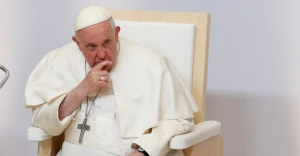
Frontline situation is quite contrasting, but fight goes on
Western weaponry and Ukrainian resilience are changing the course of the war against Russia
Bottom line. Here's summer.
''The hardest months are over. The result - the fight is still going on.''
It could have been much worse.
At the moment the situation can not be described by any single colours. Maximum contrast.
Even the past 24 hours. Another barbaric strike on a residential building - and yet there are results in the Krasnodar region. And with a Ukrainian missile.
There is also, albeit half-heartedly, permission to conduct active defence with Western weapons on Russian territory. This is the result of the joint efforts of all those who have been drawing attention to the problem with the focus on Kharkiv.
So far, everything is going along the lines described 2 months ago.
Let's refresh.
What is changing?
Firstly, the flow of American aid has been unblocked. It's been a little over a month, and the results are already slowly being seen on the front. The saturation will take place for a few more weeks, after which there will be a plateau of sorts. Things will get a little easier on the ground.
Secondly, Ukrainian troops are systematically taking out the long-range Russian air defences. The launchers and radars servicing the S-300/C400. Which should not only make it easier to strike Russian military targets. It's also an element of preparation for the F-16. Which means a little more ability to push back Russian tactical aviation with KABs/UMPBs.
Probably the first vehicles could appear within a month, but the effect will be noticeable in early autumn. I.e., three more months of terror with guided bombs is a realistic prospect.
Thirdly, after the permission to use Western weapons on Russian territory in a limited way, a conceptual nuance has emerged. When Putin started making moves near the border, he covered himself with the idea of a 'sanitary zone' to protect Belgorod and other border territories. Three weeks of fighting have passed. The result is exactly the opposite of the Kremlin's plans - there are prerequisites for the creation of a 'sanitary zone' about 50 kilometres deep into the Russian Federation (where HIMARS can reach). We could not achieve this before, but now we potentially can. This is a clear example of the 'negative growth' metaphor so beloved in Russia.
Fourthly, even the possibility of limited use of the same HIMARS across the territory of the Russian Federation affects the overall picture. As stated earlier, Russia is approaching the moment when it will have to choose the direction of the main strike within the framework of the summer-autumn campaign. Now the most obvious option is the Donetsk region. However, as the number of long-range weapons at the disposal of the Ukrainian army increased, the motivation to shift the focus to Kharkiv grew. Now this motivation has been balanced. The chances of success of a hypothetical 'offensive on Kharkiv' (coverage from the west, etc.) are decreasing. As a consequence, its probability in principle is reduced. This, in fact, is what we need to work on with all our strength.
''What is important to note. The civilians of Kharkiv, refusing to fall into panic, destroyed the plans of the Russian command. Ukrainian troops inflicted heavy losses on the enemy in the border zone and foiled plans for simultaneous movements in the Sumy region. ''
The Russians are building up a group there, but a kind of false start in the Kharkiv region will force them to adjust their plans. To continue the pressure, the Russians will be forced to deploy additional forces from other parts of the front.
About the author: Oleksii Kopytko, former advisor to Ukraine's Defense Minister.
The editors don't always share the opinions expressed by the authors of the blogs.
- News














































